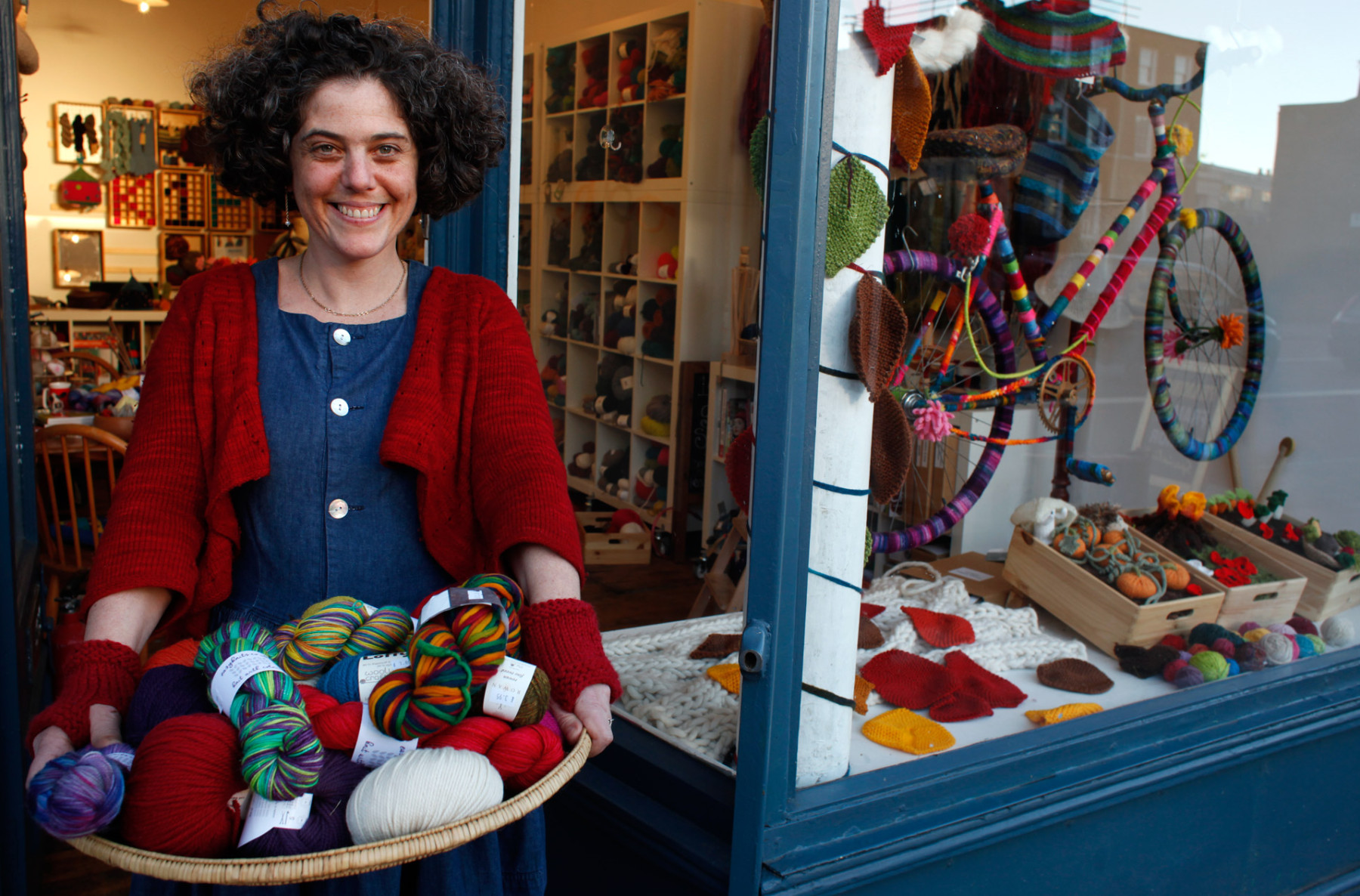“I’m sorry but I’m old fashioned and I prefer to knit with straight needles: Separate sleeves, back and front pieces. Starting at the bottom. I’d like a pattern like that please.”
There was a time – and it really wasn’t that long ago – when you’d rarely hear this slightly defensive request from knitters in a wool shop. Not because no one wanted to knit flat with straight needles, but because that’s just how all the patterns were. There was no need to ask for it or apologise for wanting something old fashioned.
Pattern designers were schooled in a knitwear approach that was firmly grounded in tailoring techniques. So the engineering for a sweater came down to understanding what shapes of flat fabric were needed to fit together to create the design form. They wrote knitting patterns with instructions for making several differently shaped pieces of knitting with edges that matched up so they could be sewn together into the final garment.
Far from being an old fashioned approach, it turns out that in their time, these tailoring-tutored pattern writers, were re-inventing knitwear design in a modern and radical way. For the sweater knitting that came before them in the UK was largely done by fisherfolk without the aid of written instructions, on long double-pointed needles. Their knitting tradition, made famous in what are now called Guernseys or Ganseys, was to knit circularly as far as the underarm, then begin the yoke by working the back and front separately, then join at the top with a 3 needle bind-off. The sleeves were added by picking up stitches around the armhole and knitting down. Sewing didn’t come into it. Tightly spun and densely knit, these were sweaters designed with weather-proofing and durability in mind, rather than trending fashions. So seams were false (created down each side of the body with a purl on the right side to aide navigating the rounds in poor light) or knitted together as at the shoulder. The direction of stitch-travel meant that areas likely to wear thin like cuffs and necklines, were easy to unravel and re-knit.
Beyond seamlessness it can look like there’s not much to link the old Guernsey style of sweater construction to our current trend in top-down, circularly knitted, short-row-shaped sweaters. Knitting tastes and traditions move on, and as we all carry on knitting, we’re likely to see the revival and reinvention of lapsed ways of doing things, not as a repeat of what came before, but rather with new and adapted styles. But our heroic trusty knitted stitch, carries on regardless. And that links us in a profound and very tangible way to the knitters from before. Ultimately our stitches are the same whether they go up, down or side to side. Whether they follow rows or rounds, if you’re knitting them, you’re necessarily a knitter. And as far as we’re concerned, that’s all that matters.

